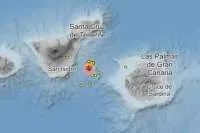8.2% of residential housing in the Canary Islands is owned by ‘Large Landlords’
- 26-11-2024
- Business
- Canarian Weekly
- Photo Credit: CW
The Canary Islands have the highest figures in Spain for residential properties owned by “large landlords” and companies that have more than ten properties, with 8.2% of the total residential housing market. This is double the national average of 4.3%, as revealed by the latest data published by the Cadastre and the Ministry of Finance for Spain.
There are 81,632 residential properties in the Canary Islands owned and controlled by large landlords out of a total housing stock of 999,056 properties, many of which are now being used for holiday lets. Of this 8.2%, approximately:
- 4.3% is owned by landlords with 10 to 100 properties.
- 3.8% is held by those with more than 100 properties.
This makes the region the most concentrated in Spain for housing ownership by large landlords, followed by Murcia and Catalonia (5.7%), Asturias (5.6%), and Madrid (5%).
Impact of Large Landlords on Housing Availability
When focusing on homes available for long-term let, holiday rental, or left empty, excluding primary residences, the share of properties owned by large landlords in Spain rises from 4.3% to 8.5%. In the Canary Islands, this percentage jumps significantly, from 8.2% to 14.6%.
The high concentration of housing ownership has a notable presence in municipalities with a strong focus on tourism. In municipalities such as Tías (Lanzarote) and La Oliva (Fuerteventura), large landlords hold 64.8% and 40.1% of the housing stock, respectively.
Breakdown by Provinces
Las Palmas de Gran Canaria:
· 39,974 homes (8.14% of the province’s housing stock) are owned by large landlords.
· Of these, 12,257 are owned by those with 10–25 properties, 8,520 by those with 25–100, and 19,197 by those owning more than 100.
Santa Cruz de Tenerife:
· 41,658 homes (8.2% of the housing stock) fall under large landlords.
· This includes 12,675 homes owned by landlords with 10–25 properties, 9,818 by those with 25–100, and 19,165 by those with over 100.
Tourism's Role in Housing Concentration
Tourist hotspots further amplify the presence of large landlords. For instance:
- In Tenerife, 42.1% of homes in Arona, 29% in Granadilla de Abona, and 20.8% in Adeje belong to owners with more than five properties.
- In Gran Canaria, 26.8% of homes in San Bartolomé de Tirajana and 30% in Mogán are similarly concentrated.
The data reflects the prominence of tourism-related properties in these areas, as short-term rentals and holiday homes often fall under the ownership of large landlords.
The Situation Nationally
Across Spain, more than one million homes are controlled by approximately 27,000 large landlords, with an average of 39 properties each. The largest ten landlords collectively own over 200,000 properties.
The analysis highlights the growing impact of large landlords on the housing market, particularly in the Canary Islands. Economist Carme Trilla emphasizes that it’s not merely the quantity of housing but the type of landlord that matters.
Institutional landlords, such as investment funds or financial entities, are often more detached from the housing market's social needs compared to individual landlords or developers focused on sustainable rental models.
This growing trend highlights the tension between housing as a social good and its commodification in regions heavily dependent on tourism.


























































